IN GOWANUS, AMONGST COCAINE FIENDS (1914)
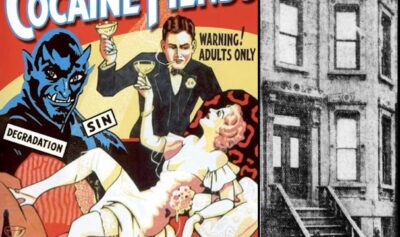
******************************************************************************************************************************** Brownstone Detectives investigates the history of our clients’ homes. The story you are about to read was composed from research conducted in the course of one of those investigations. Do you know the history of YOUR house? ******************************************************************************************************************************** Cocaine abuse truly became a “thing” in the United States starting in the early 20th century. Although it existed here earlier than that, it wasn’t until the early 1900s that states began to prick up their ears to the threat and counter its effects on society. In 1910, President William Taft declared the white powder “Public Enemy No. 1,” and in 1914, where our story begins, Congress passed the Harrison act, which tightly regulated the distribution and sale of cocaine. That year, an unassuming brownstone in the less-than-glitzy Gowanus neighborhood in Brooklyn became the target, first, of wealthy cocaine users and then, second, the police. SAY WEALTHY FOLK GOT COCAINE HERE “Detectives Asip and Dowd, of the Bergen street station, made a raid at the two-story and basement brownstone house at 666 Degraw street late yesterday afternoon,” noted the Brooklyn Daily Eagle, “and arrested a man and a woman for selling and dealing in cocaine, heroin and opium. “The attention of the police had been called to the place by some neighbors. The frequent presence of automobiles, carriages and other vehicular equipment of well-to-do persons at the front door aroused suspicion. “Detectives Asip and Dowd got a tip which led them to believe that the occupants of the house were dealing […]
THE MARXIST AT No. 477 E. 16th St. (1910)
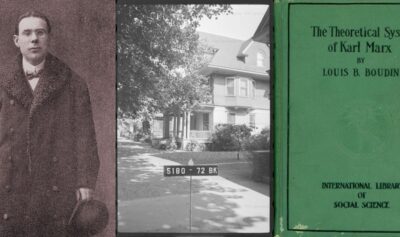
******************************************************************************************************************************** Brownstone Detectives investigates the history of our clients’ homes. The story you are about to read was composed from research conducted in the course of one of those investigations. Do you know the history of YOUR house? ******************************************************************************************************************************** At No. 477 East Sixteenth Street lived a Socialist. He wasn’t your ordinary, run-of-the-mill Socialist, however. Louis B. Boudin was a Russian-born American Marxist theoretician, writer, politician, and lawyer, who wrote a two volume history of the Supreme Court’s influence on American government as well as his piece de resistance, The Theoretical System of Karl Marx in the Light of Recent Criticism, first published in 1907. Boudin’s family emigrated to America in June 1891 and settled in New York City. He worked in the garment industry as a shirt maker and as a private tutor. At the same time, Boudin began legal studies, gaining a Master’s Degree from New York University and being admitted to the New York State Bar Association in 1898. At first, Boudin was a member of the Socialist Labor Party of America. He was also a member of the governing National Executive Board of the party’s trade union affiliate, the Socialist Trade and Labor Alliance from 1898 to 1899. Although he left the party for a short period, he returned after the turn of the century, being elected a delegate of the Socialist Party of America of the International Socialist Congress in Stuttgart in 1907 and the 1910 Copenhagen Congress of the Second International. Boudin was frequently […]
HOW TO REMOVE A BROWNSTONE STOOP (1905)
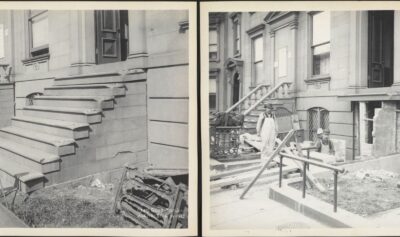
******************************************************************************************************************************** Brownstone Detectives investigates the history of our clients’ homes. The story you are about to read was composed from research conducted in the course of one of those investigations. Do you know the history of YOUR house? ******************************************************************************************************************************** Today, brownstone owners shake their heads in wonder. “Why would anyone intentionally remove the stoop from their own townhouse?” they muse. The stoop, like a timeless portrait’s gilded frame, is a vital element to the design and use of the townhouse. It carries the focus of the viewer into the house itself, just as the stoop physically transports the resident bodily into the house. A brownstone house simply cannot exist without its stoop. Well, like shag carpeting in the 1970s, stoop removal was all the rage in the 1940s. “Remove your stoop and turn your brownstone into apartments,” was the sage advice of contractors hoping to bring their clients’ properties into the 20th century. “Remove your brownstone stoop and add value to your property,” they said. If you didn’t see it happen, though, with your own eyes, you might assume that the destruction was merely accidental. Perhaps a car crashed into the structure and damaged the stoop beyond repair, or time and the elements slowly destroyed the stoop. Well, here, thanks to the New York Historical Society, we have pictures – in all their “glory” – of the “before,” “during” and “after” snapshots of the destruction of one of those august brownstone set of steps. These, documenting the disappearance of a […]
THE DUKE OF No. 210 ST JOHNS PL (1907)
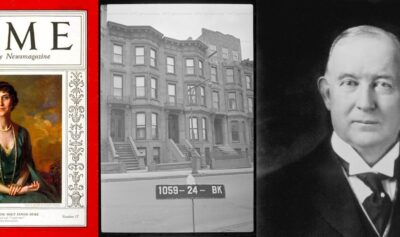
******************************************************************************************************************************** Brownstone Detectives investigates the history of our clients’ homes. The story you are about to read was composed from research conducted in the course of one of those investigations. Do you know the history of YOUR house? ******************************************************************************************************************************** In 1907, a quiet wedding took place on a sleepy Brooklyn block in one of its august brownstones. It was no ordinary wedding, however. For the ceremony was about to join a young widow of the borough to one of the most successful businessmen of the country – and one of its most ruthless trust violators – the “Tobacco King.” THE ROBBER BARON CORNERS TOBACCO James Buchanan Duke, whose name was “lent” to the North Carolina university in exchange for part of a hefty $40M endowment, was known as the “Tobacco King” for his aggressive cornering of the American tobacco market in the late 19th century. Duke not only brought the American tobacco industry to its knees, but he also knew the importance to the future of the cigarette industry was in its automation; he, thus, obtained the license to the first automated cigarette making machine which brought a speedier production line as well as lower costs to his companies and, in extension, the entire cigarette industry. By 1890, Duke supplied 40% of the American cigarette market and, in the same year, consolidated control of his four major competitors under one corporate entity, the American Tobacco Company. This formed a monopoly giving him control of more than 90% of the American […]
MONKEY SHINES AT No. 72 ST. JAMES PL (1889)
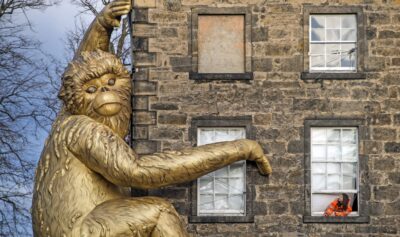
******************************************************************************************************************************** Brownstone Detectives investigates the history of our clients’ homes. The story you are about to read was composed from research conducted in the course of one of those investigations. Do you know the history of YOUR house? ******************************************************************************************************************************** A monkey in Victorian Brooklyn was not the most unusual sight to behold. In fact, the furry little creatures had been roaming the streets of the city since the introduction of the organ grinder. What was unusual, however, was waking up to one that was in “undisputed possession” of your house. ACT I – THE CREATURE APPEARS One Sunday morning in the summer of 1889 at the residence of Mr. William C. Mellins, No. 72 St James Place, Brooklyn, and in that of his next-door neighbor, lawyer William H. Morse, a disturbance of a sort took place. The 2-story and mansard brick residences of Messrs. Morse and Mellins sat, at the time, in a very rustic setting. They were “in the middle of a little block of five buildings, which have vacant lots on either end and a fruit orchard in the rear.” Well, late on a Saturday evening, Mellins happened to be drawn to a sound at his second-story front window. When he went to investigate, he looked toward the sounds, which appeared to be coming from his window. What he saw caused him to wonder if he were seeing things. There returning his gaze was a monkey clinging to his windowsill, looking into the room. Then, as quickly as […]
PAINTING THE HUDSON AT No. 75 ST. JAMES PL
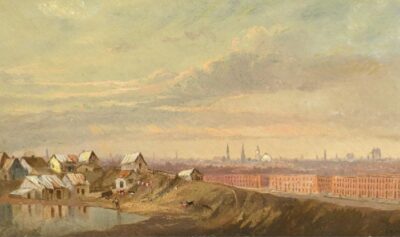
******************************************************************************************************************************** Brownstone Detectives investigates the history of our clients’ homes. The story you are about to read was composed from research conducted in the course of one of those investigations. Do you know the history of YOUR house? ******************************************************************************************************************************** Charles Day Hunt was a talented landscape painter whose work pivoted between the naturalism of the Hudson River School and the expressionism of the Tonalists. Born in Detroit, Michigan, in 1840, he eventually settled in Brooklyn, New York, around 1858 and trained under the landscape painters of the day: John F. Kensett and Alexander Wyant. Hunt’s exhibitions of oil and water color works took place from his studio at No. 75 St. James Place in Clinton Hill section of Brooklyn. Hunt’s work seamlessly blends the influences of both of his mentors in an individual style of crisp brilliance and atmospheric moodiness. Beginning in 1866 going through 1886, Hunt exhibited many times at The National Academy of Art & Design and The Brooklyn Academy of Art. He gained prominence as a member of The Black & White Club, which was a private American art association. Hunt died in 1914 in Brooklyn where, in his studio, his funeral was held. The body lay “beside the empty studio chair, pulled up before the easel,” noted the Brooklyn Daily Eagle, “on which was the picture Mr. Hunt had been working on before his seizure; the palette and oil colors were still wet.” Today, his works can be found in private and public collections, including The Brooklyn Museum […]